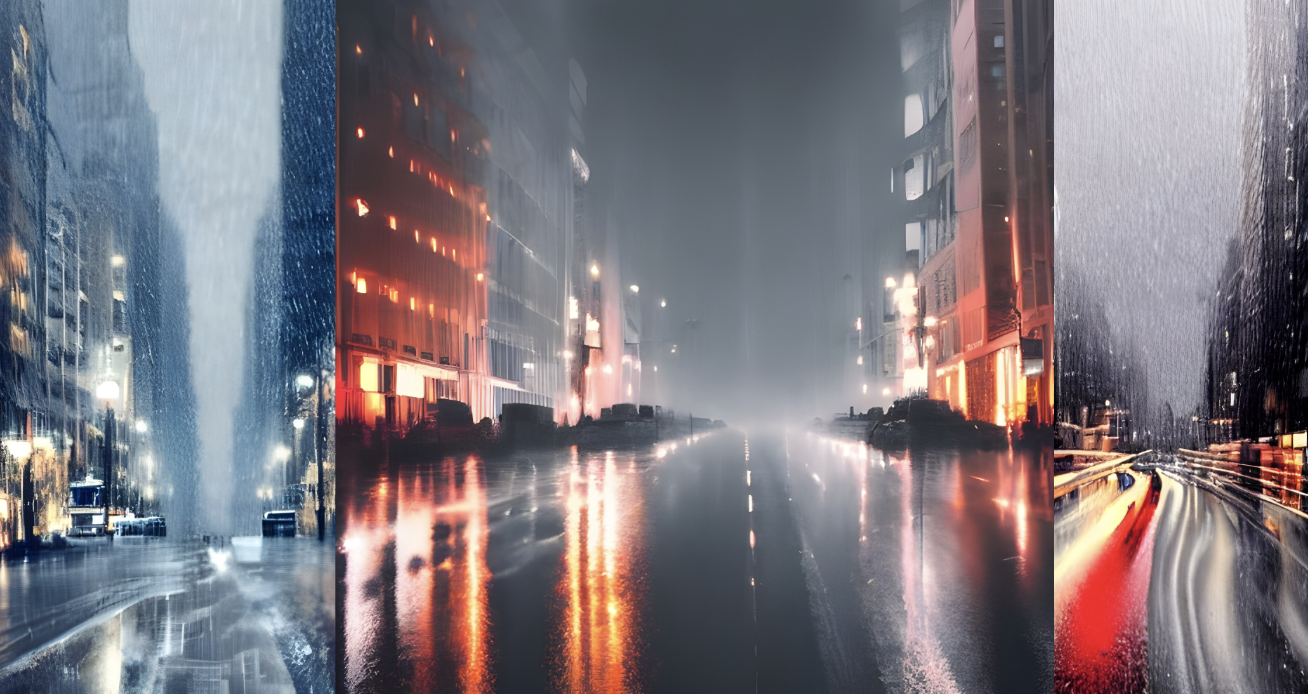(Three images that came up when searching “big city in the rain” on DeepAI)
How many images do we scroll through on a daily basis, and how many of these images are actually real? As Artificial Intelligence, also known as AI, advances its abilities, these questions become more relevant, threatening an uncertain future that we should fight to change.
The growth of ChatGPT, a chatbot website that is able to answer questions users ask with incredible accuracy, has changed the way many people go about their daily tasks, relying on the additional help to complete homework, projects, and develop ideas. This growing reliance has opened doors for mistrust and misuse that go beyond what existed before.
Not long after, social media has started to flood with AI-generated images and media, as users mess around with various software. Yet the jokes have revealed a darker truth that needs more awareness.
The pace AI-generated media is advancing has the potential to put innocent people in harm’s way and lead the truth to become indistinguishable.
Neverending Instagram reels showcase several ways people use AI, one being to generate different fills for parts of preexisting images. This can not only change what a scene looks like or what a person is doing, but what actual features a person has.
At what point does innocent fun turn into malicious deceit?
This raises several questions, one being the future of cyberbullying and assault. People have been using Photoshop among other editing software for years to change outward appearance. AI is adding a way to do this without needing the editing skills that Photoshop requires.
With more access to media than ever before, it would be incredibly easy to take a picture of a random person and make it look a certain way. We have also had to rethink whether or not to judge images displaying things like text screenshots, as these can easily be faked as well.
Andrew Rossini, a freshman at Saint Xavier University, says, “If it gets to the point where it becomes indistinguishable, something has to be done. It definitely could ruin lives.”
There is a current issue involving AI and Taylor Swift that has led to the debate of whether or not AI should have regulations. According to an ABC News article, “Millions came across fake sexually explicit AI-generated images of Taylor Swift on social media this week, underscoring for many the need to regulate potential nefarious uses of AI technology.”
The ABC News article goes on to say, “A few years back, a user needed to have a certain level of technical skills to create AI-generated content with rapid advances in AI technology, but now it’s a matter of downloading an app or clicking a few buttons.”
Swift’s current situation combined with the easily accessible AI-generating software definitely calls for regulations. It has gotten to a point where it would be difficult to argue for complete freedom with the software’s growing capabilities. Such also threatens a new era of misinformation spreading with little regard for what is true.
The problems do not end there, impacting people’s personal hobbies and careers as well.
According to an article from NBC News, “AI-generated art has won prizes in art competitions, and it is actively being used by some content creators who might have previously used human illustrators, elbowing out artists who use more traditional methods and raising both hope and hand-wringing about the future of art.”
With so much at stake for people around the world, we are left to wonder how easy it actually is to tell the difference between an AI-generated image and a real one. NBC News released an interactive quiz, providing users 21 questions where they can see for themselves just how hard this can be.
I decided to take it just to see if my fears surrounding AI’s existence are justified. I ended up getting about 66% correct, which is a concerning number considering the fact that AI is continuously improving.
The images offer brief explanations as well as the source used to generate them. I also witnessed some friends take the test; it was a struggle trying to find helpful clues or information to lead to a definitive answer.
This test is harmless; it is the AI-generated media going around without people knowing that is the issue. There clearly should be some sort of regulation or list of rules put in place before lives get ruined.
Rossini went on to say, “I think AI-generated images should be tagged as such. Yet it is hard to draw the line for who should or should not be able to access these softwares.”
With that, AI has already proven the endless possibilities for its misuse. If it is going to continue to be so accessible, we need a change and some sort of regulations established. Without this, the future is looking pessimistic regarding the spread of misinformation online.
Where we draw the line is to be determined as AI software continues to progress. However, now is the time to start fighting back for the safety of our privacy.

